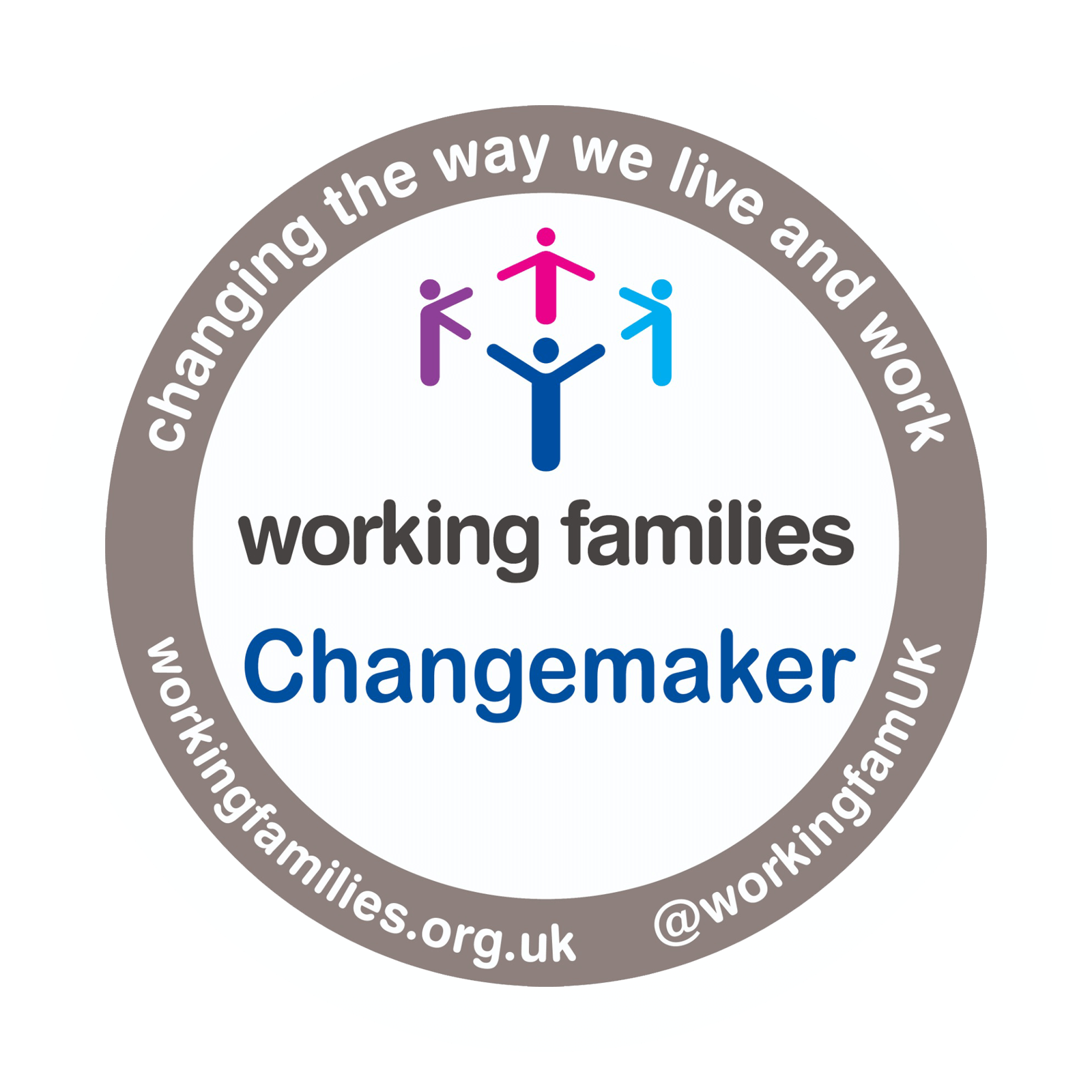Flexible working has become a buzzword in the modern workplace, so much so that it could be said its meaning has been diluted with the breadth of its use. Advances in technology and shifting attitudes towards work-life balance, especially post-pandemic, have seen more companies recognise the benefits of providing employees with flexible working options. But what exactly is flexible working, and what are the different versions of it?
In this article we’ll be delving into a few of the many flexible working models available, and the pros and cons of each.
What is flexible working?
Flexible working refers to any working arrangement that is an alternative to traditional nine-to-five office hours. There are various forms of flexible working, including remote work, hybrid, part-time, job sharing, and compressed workweeks. These options allow employees to create a working schedule that fits with their personal life or commitments while meeting their employers’ needs in terms of deliverables and outputs.
The UK government has promoted flexible working over the last few years, even proposing new laws that will give employees the right to request flexible working from day one of employment. However, aside from complying with new rules and legislations, many companies are starting to recognise the benefits of providing employees with flexible working opportunities. According to Sonovate’s Future World of Work report, which surveyed 4,500 people, including 500 small and medium business owners, 67% of respondents believe flexibility is crucial when competing for the most sought-after skills. In addition, 70% think the most skilled people know their worth and will only work under conditions that suit them.
It’s not just businesses embracing flexible working; employees want it too. In the same survey, 57% of individuals said that working for companies that embrace flexibility is important, and 30% want to choose their hours, as well as how many days and which days they work.
What are the advantages of flexible working?
Flexible working arrangements offer a range of advantages to both employees and employers. Here are some of the key benefits:
For employees:
- Improved work-life balance: Flexible working allows employees to balance their work and personal lives more effectively, making it easier to manage commitments such as childcare or caring for elderly relatives.
- Reduced stress and burnout: With greater control over their working patterns, employees are less likely to feel overwhelmed or overworked, which can help to reduce stress and burnout.
- Increased productivity: Flexible working can enable employees to work when they’re most productive, which can lead to higher levels of productivity and output.
- Greater job satisfaction: When employees have more control over their working arrangements, they’re more likely to feel valued and engaged, which can boost job satisfaction and morale.
- Improved health and well-being: With more time to focus on their health and well-being, employees may be less likely to experience physical or mental health problems. Employees who participated in a 4-day week trial reported improved physical and mental health, work-life balance and increased general life satisfaction.
For employers:
- Attracting top talent: Offering flexible working arrangements can make a company more attractive to potential hires, especially for those who value work-life balance. According to a CIPD report, 87% of people said they want to work flexibly. Not promoting flexible employment opportunities will limit your chances of accessing the best talent pool.
- Reducing staff turnover: Flexible working options can also make it easier to retain staff, reducing recruiting and training costs. The same CIPD report found that higher levels of engagement experienced by working flexibly can reduce staff turnover by 87%.
- Increased productivity: By allowing employees to work in a way that suits them, they are more likely to be productive, which can lead to better business outcomes. When asked to rate improved productivity during the 4-day week trial on a scale where one was negative and 10 was very positive, employers gave it 7.7.
- Reduced costs: Employers can save on office space and other overheads if employees are working remotely or on a compressed schedule.
- Improved employee engagement and loyalty: When employees feel valued and supported, they’re more likely to be engaged and committed to their employer.
- Better diversity and inclusion: Flexible working arrangements can enable a more diverse range of people to enter or remain in the workforce, including those with caring responsibilities or disabilities.
What are the different types of flexible working?
Remote and hybrid working
Remote and hybrid work is a flexible working option that has become particularly popular in the wake of the COVID-19 pandemic. According to research by CIPD published last year, more than three-quarters of organisations surveyed (78%) allow hybrid working through either formal or informal arrangements.
Similarly, a study conducted on 3,000 UK office workers by Unispace showed that hybrid working has almost tripled since the pandemic, with 63% of those surveyed now working in a hybrid way.
Remote work involves working in a location other than the business premises, typically from home, using technology to stay connected with colleagues. Hybrid working is similar, except employees will split their workweek between working remotely and in the office.
Working remotely or in a hybrid pattern can be a huge benefit for employees and employers alike. Research from Gallup shows that some of the most significant benefits of hybrid and remote work include improved work-life balance, higher productivity, less burnout, more efficient use of time and the freedom to choose when and where you work.
For employers, advantages ranged from savings on office spaces to higher levels of employee job satisfaction and reduced absence rates.
Despite the many benefits, challenges can arise, such as feelings of isolation amongst remote workers and difficulty in separating home and work life. To combat this, organisations who want to adopt a hybrid/remote working approach should:
- Ensure tech is aligned and easily accessed both within the office and remotely
- Ensure policies are current and reflect the hybrid/remote working approach
- Keep communication channels open and regularly gather feedback and gauge sentiment from employees.
Part time
Part time work is perhaps the most well-known flexible working option. It typically involves working fewer than the employers’ full time business hours of 37.5 or 40 hours per week.
According to recent findings, a quarter of British employees now work part-time – ie, around 8 million part time workers, up from 5.8 million people back in 2018. This can be an ideal option for employees who require flexibility due to commitments outside of work, such as childcare, caring for relatives or other commitments such as study or voluntary work.
For employers, hiring part time talent can be a great way to get the skills you need on a limited budget. Hiring part time staff is not only a great way to re-introduce experienced and valuable professionals into the workforce, but it can also be an essential tool in driving greater diversity initiatives within your organisation that will help promote a stronger team, and business, overall.
Compressed hours
Compressed workweeks involve condensing a typical five-day workweek into four days. This can be done by working longer hours for four days and taking an additional day off. This type of flexible working arrangement has seen a surge in popularity over the last few years and has made a splash across headlines.
In June 2022, over 60 companies and almost 3,000 workers took part in the world’s largest trial of a 4-day week, with no loss of pay for workers. The experiment – conducted in the UK by the non-profit 4 Day Week Global, the UK’s 4 Day Week Campaign and think-tank Autonomy – demonstrated the benefits of a shorter workweek.
Overall results showed that almost every organisation would stick to a 4-day week post-trial, with 91% continuing or planning to continue and a further 4% leaning towards continuing. In addition, the health and well-being of employees also improved, with huge gains observed in physical and mental health, time spent exercising, and overall life and job satisfaction.
Of course, there were some businesses where the trial wasn’t successful – such as customer-facing organisations who faced greater challenges in maintaining a four-day workweek. However, the overall success of the experiment has demonstrated that there are viable alternatives to the traditional nine-to-five, 5-day week.
Job shares
Job sharing is another flexible working option. In this model two employees divide the tasks and responsibilities of one full time role.
This can be a good option for employees who require flexibility and want to work part time hours but have a job that cannot be done on a part time basis. Job sharing can provide similar benefits to part time work while maintaining work continuity.
However, as with part time work, some employers may be hesitant to offer job sharing opportunities due to the perceived extra complexity that can come with two people working in one role. However, with the proper planning and communication, job sharing can be a terrific way for employers to benefit from two brains instead of one in the role.
This can often lead to better results for employers as they will get additional experience, skills, and expertise from having two people in the position rather than just one. Also, job sharing allows organisations to access talent that may have been unavailable in a full time role.
Other flexible working options
Other less common flexible working models are available, such as the nine-day fortnight. This is an arrangement where employees work nine days a fortnight rather than ten, while maintaining full time hours.
This arrangement can have benefits (like many other flexible working options), such as providing employees with regular time off while maintaining full time income.
It can also help reduce employee stress and improve work-life balance. However, employers must maintain work continuity, and employees may find it challenging to complete their tasks within a shorter time frame.
Additionally, employers must ensure they have the proper infrastructure in place, such as scheduling tools or other technology, to transition smoothly to this arrangement.
How to create a flexible working policy
If you think flexible working could be an option for your business, you need to carefully consider the various models and start drawing up a plan. Here are some steps you can follow to create a flexible working policy:
- Identify the types of flexible working arrangements that your business can offer. This could include remote working, part time working, compressed hours, job sharing, or other arrangements. Each has their own pros and cons which we’ve detailed above.
- Determine eligibility criteria for flexible working. This could include job roles, tenure, performance, and other factors.
- Outline the procedure for requesting flexible working arrangements. This should include the process for submitting requests, the timeline for approval or denial, and the criteria for making a decision.
- Identify the responsibilities of the employee and the employer in the flexible working arrangement. This should include expectations around productivity, availability, communication, and meeting attendance.
- Establish guidelines for communication and collaboration for employees who work remotely or have flexible hours. This could include expectations around responding to emails, participating in team meetings, and providing regular progress updates.
- Establish procedures for monitoring and evaluating the success of the flexible working policy. This could include regular check-ins with employees who work flexibly, tracking productivity and performance metrics, and soliciting feedback from employees
- Ensure that the flexible working policy is consistent with applicable laws and regulations.
Remember to consult with your HR department/adviser or legal counsel when creating a flexible working policy to ensure that it meets your business needs and is legally compliant.
Concluding thoughts
Flexible working has become an essential aspect of the modern workplace. There are various models available, each with its pros and cons. Not all options will suit all employing organisations, however employers who are able to provide flexible working arrangements can expect to see many advantages.
Overall, flexible working presents an attractive proposition for employers and employees alike. By taking the time to consider their needs, employers can reap the benefits of flexible working while still maintaining productivity and work continuity. In the long-term, flexible working can be a great way to improve employee satisfaction and productivity, reduce staff turnover rates, and ensure access to the best talent.
If you’d like to read this article in PDF form, please download a copy here:








